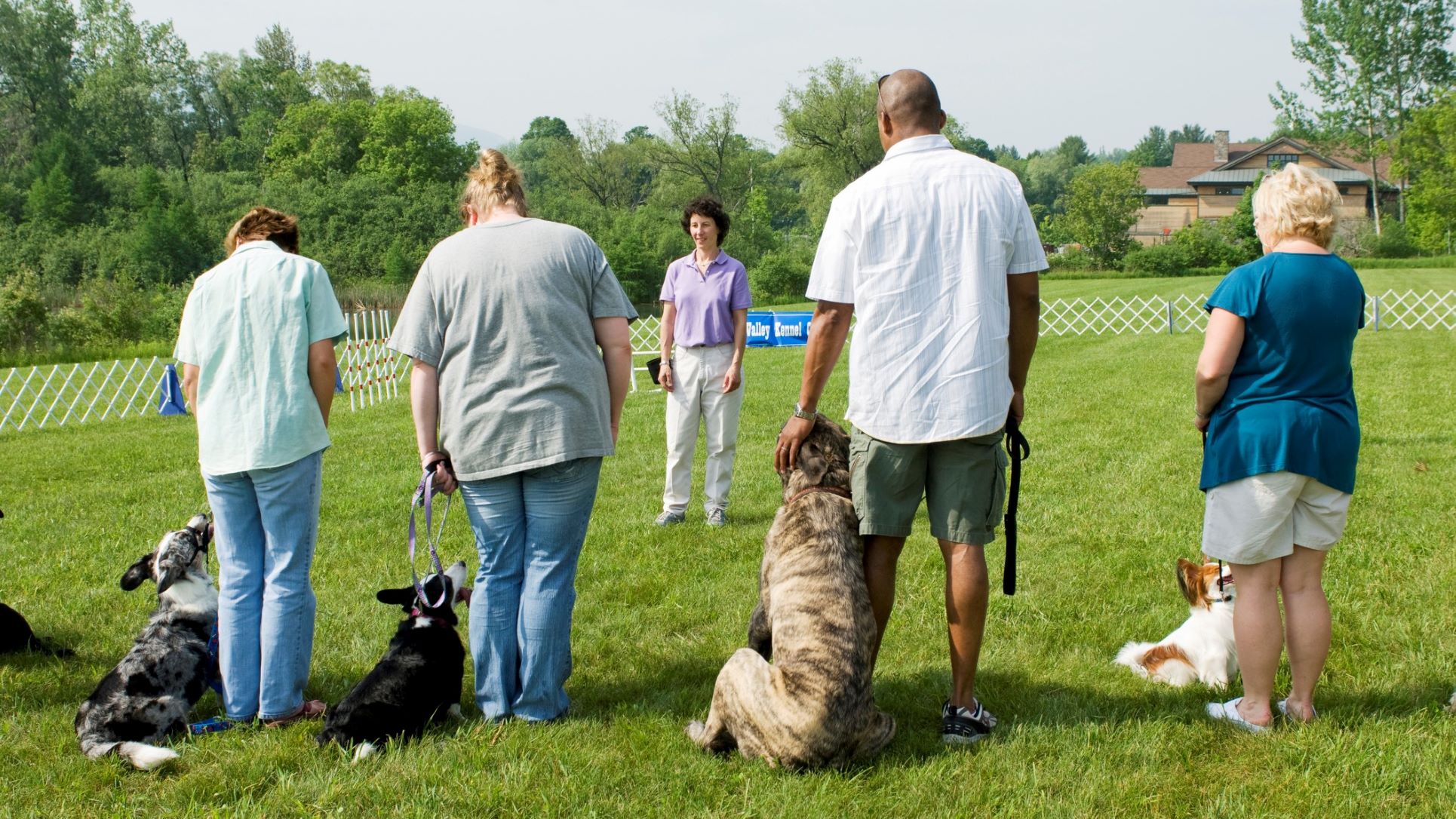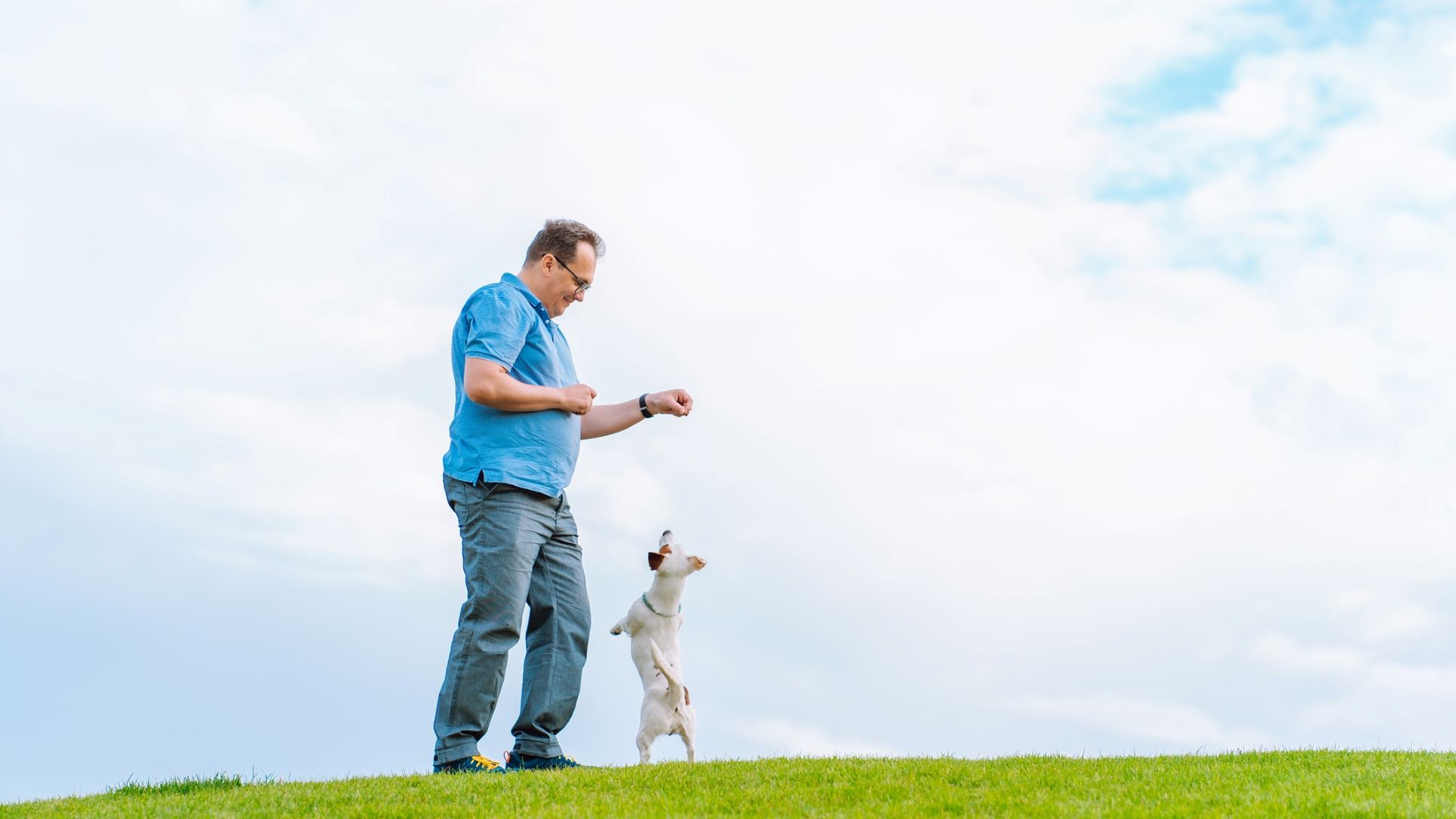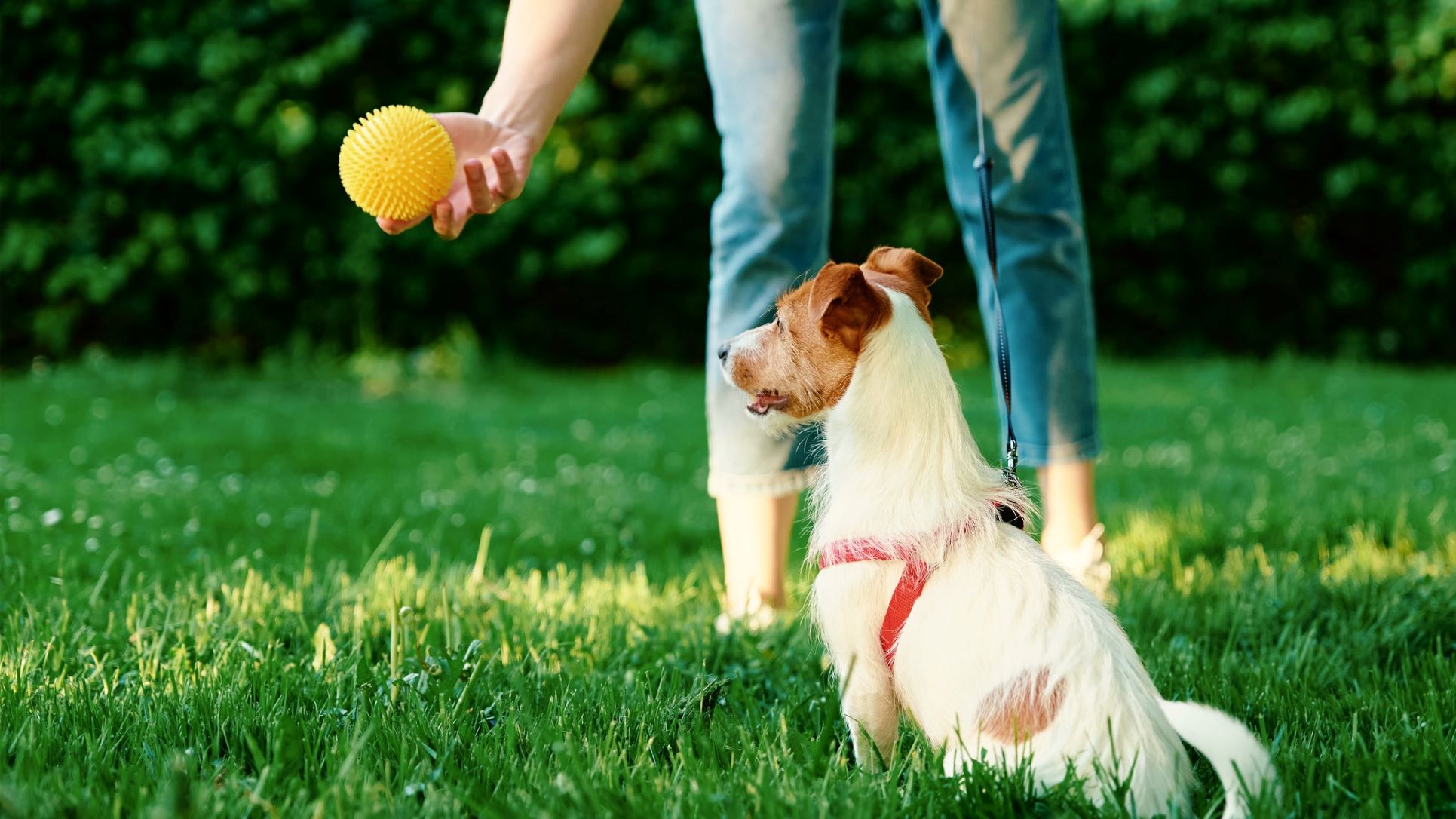How to spot dog trainer red flags
Not every dog trainer is created equal – here are six dog trainer red flags so you can protect your dog from inappropriate influences

While most dog owners will talk about how amazing it was to take their puppy home for the first time, not many people will share how overwhelmed or nervous they might have felt as well. Adjusting to life with a new puppy isn’t easy, especially if it’s your first time owning a dog. One of the best things you can do is find yourself a good dog trainer so that your puppy grows up to be a well-behaved and reliable dog.
However, this can be easier said than done. Unfortunately, dog training is a completely unregulated industry. This means that anyone with a pocket full of the best dog treats can set themselves up as a dog trainer, even if they’ve had no formal training or credentials. This makes dog owners and their dogs vulnerable to being taken advantage of by someone who doesn’t really know what they’re doing – not only is this a waste of the owners’ time and money, but it can also exacerbate or even cause issues with the dog too.
To protect yourself and your dog from unscrupulous trainers that are happy to pocket your money without having had any training themselves, we’ve rounded up six red flags to look out for. We would seriously advise you to avoid anyone who does any of the following, as you could potentially be putting your dog’s wellbeing at risk.
1. No formal training or accreditation
Any good dog trainer worth their salt will be certified with an organization – and will proudly display this fact on their social media or their website. If the trainer you’re looking into doesn’t advertise this, it might be worth asking them whether they’ve completed any formal training.
However, why is it so important to find a dog trainer that’s certified by an organization? We asked Lara Sorisi, an APDT-certified dog trainer and a championship gundog trainer. She says, “APDT-certified, CCPDT-certified, and IMDT-certified trainers are subjected to rigorous assessment to ensure that they know what they’re doing. It’s important to make sure that the professionals you consult have a thorough understanding and knowledge of behavior, learning theory, and body language. The only way you can be sure of this is to go to one that’s certified by an accredited organization.”

Lara Sorisi is a science-based and force-free dog trainer that has been training dogs for six years. She is accredited by the APDT (Association of Pet Dog Trainers), which is one of the most rigorous dog training qualifications available. Lara holds a bronze-level qualification with UK Sniffer Dogs, which means that she is an accredited UK Sniffer Dogs instructor. She’s also formally competed in gundog trials for three years.

2. Uses aversive tools
When looking at your trainer’s website or social media, keep an eye out for the type of tools they’re using. If you see tools such as choke chains, prong collars or shock collars, then we would recommend finding someone else. While popular amongst a large number of dog trainers, aversive tools and methods can create significant problems for your dog.
Get the best advice, tips and top tech for your beloved Pets
Lara says, “There will usually be a knock-on effect from aversive training somewhere. If the dog is being punished for an unwanted behavior, such as barking, pulling on the lead or jumping up, it could start to become reactive, or display anxiety-based and unwanted behaviors. In fact, using an aversive tool or method can really make a situation much worse, because the dog will be anticipating the punishment. Unfortunately, force can initially provide what looks like instant results, but you will most likely see more serious problems in the long term.”
Unfortunately, some aversive methods might not be immediately noticeable on a trainer’s website, so you might not realize they use them until they’re working with your dog. If a trainer starts to use any of the tools or methods listed below (or suggests that you should try them yourself), then we would recommend immediately stopping the session and never returning:
- Choke chains
- Prong collars
- Shock collars/ ‘invisible fence’ collars/ e-collars
- Jerking the lead when the dog does something ‘wrong’
- Using any type of physical force (such as strongly forcing the dog to sit or lay down)
- Any type of physical punishment
- Squirting water at the dog
- Firing compressed air at the dog
- Throwing or rattling cans of stones
- Yelling
- Holding a dog’s mouth closed
- Using threatening body language
- Pressing a dog’s nose into its own urine or excrement
It’s also worth noting that there will be some dog trainers that will call themselves ‘balanced’, who will often claim that they use positive reinforcement the vast majority of the time, but will use aversive methods if they feel they need to. While this might sound more reasonable, you would still be putting your dog at risk of developing a worse behavior than the one you’re trying to resolve.
To safeguard your dog, we would recommend double-checking with a prospective dog trainer that they only use positive reinforcement before booking a session with them.
3. Guarantees results
If you’re experiencing a significant issue with your dog, we can understand how relieving and tempting the idea of someone guaranteeing a result can be. However, dogs are not robots – they’re emotional beings that cannot be reprogrammed or rebooted. If your dog has an issue, there will never be a guarantee that it can be fixed.
With time, patience and understanding, it’s very likely that their behavior will get better (either so that the problem is resolved, or that it’s much more easily managed), but you should be suspicious of any trainer that promises a perfect result.

4. Advertises ‘instant’ results
Similarly to the previous red flag, we would advise you to be even more suspicious of anyone that says that they can give you instant results. Yes, for some dogs and some issues, you can expect to see fast results once the correct training has been implemented. However, ‘instant results’ can often be shorthand for ‘I use aversive methods’. Again, while aversive methods can appear to initially be successful, they don’t address the underlying issue and feelings that have caused the behavior.
For example, if a dog is scared of other dogs and barks when it sees them, applying an aversive method every time they bark might make them stop barking. However, the negative emotion they felt has just been intensified by the fact that they felt pain or discomfort while viewing the other dog.
They might not bark at another dog again, but if they come close enough to one, they might be so frightened that they redirect their feelings into an even worse behavior, such as aggressively lunging or even biting. This example is not intended as fearmongering – there will likely be dogs that can experience aversive methods and don’t display any fallout. However, you can’t guarantee that your dog will be one, and the potential consequences of these harsh techniques need to be taken very seriously.
5. Trains the dog and ignores the owners
A good dog handler doesn’t necessarily make a good dog trainer. Someone might be very skillful at handling dogs and getting the best out of them, but if they can’t pass this knowledge on to the dog’s owner, then they’re not a very effective trainer. Many would argue that a good dog trainer doesn’t actually train the dog, they train the human instead.
If you’re seeing a dog trainer who takes the lead off you at every opportunity and rarely seems to interact with you, then you might want to consider finding someone else instead.

6. Believes in ‘Alpha theory’
If you’ve ever heard someone talk about their dog being an ‘alpha’, or have even suggested that you need to be more ‘dominant’ over your dog to make yourself the ‘alpha’, then you can be certain that they have absolutely no idea what they’re talking about. Alpha theory comes from a long-debunked study on captive wolves that posits that ‘alpha’ male wolves would use aggression to establish themselves as leaders of the pack.
David Mech, the original author of this idea, refuted his own work in 1999. In addition, as this article from VCA Animal Hospitals says, “Research has clearly indicated that the longstanding theory which maintained that alpha wolves control through aggression and relentless management is more myth than fact. These theories have been refuted by wolf biologists and if this theory is no longer considered true for wolves, then how can it be considered true for our dogs?”
This excellent article continues on to say that “Dominance hierarchy-based training methods assume dogs are committed to a battle of supremacy and constant challenge with family members. This premise is incorrect and not supported by scientific studies. Trainers advising families to take charge of the pack by eating first, walking through doors first, occupying a higher position, and worst of all, pinning the dogs into submission are ignoring the current scientific research and subjecting the dog to unnecessary and sometimes cruel training methods.”
Unfortunately, this debunked theory still continues to hang on in popular culture, helped by certain popular celebrity dog trainers that still believe in it. However, you can rest assured that there is no scientific evidence for alpha theory, so we would recommend avoiding any dog trainer that believes in it.
Need more training ideas? We answer; should you throw a stick for your dog?
Louise Carey is a freelance writer and the Editor of sister website Top Ten Reviews. She has been working in publishing for seven years, contributing to publications including The Independent, TechRadar, Digital Camera World and more. As the proud pet parent of a reactive border collie with a food allergy, it’s been necessary for Louise to explore a variety of fun and exciting ways to enrich an energetic dog that can’t always go on walks. She’s passionate about sharing the information she’s learned to help other pet owners as well.

